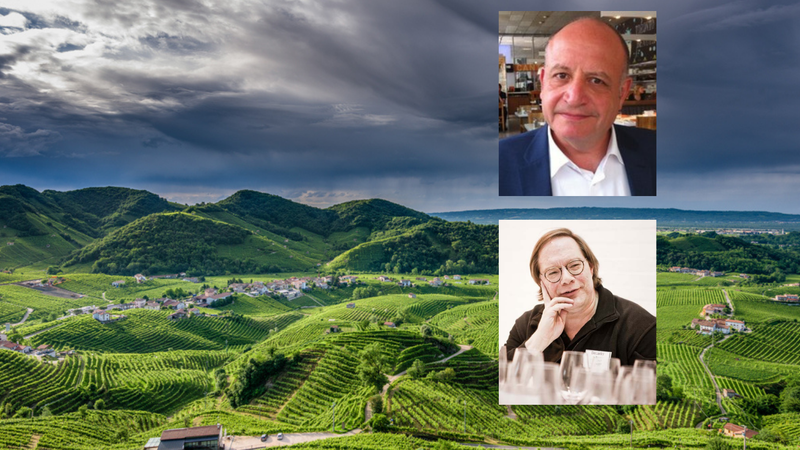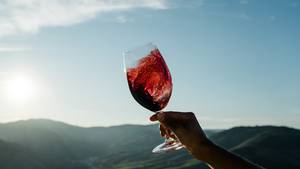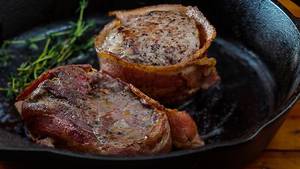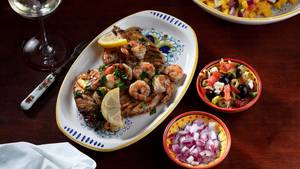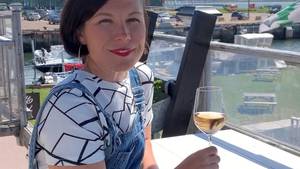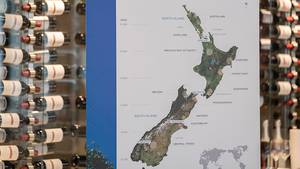The key to greatness in Prosecco is in the ‘G’ as in the DOCG. Most of the top tier Prosecco grows high up in the clustered hills of Conegliano Valdobbiadene.
KG: I had a bit of an epiphany in Prosecco country. A lot of people don’t really know that Prosecco (can be a wine of finesse and quality – worthy of a fine celebration in life not unlike champagne. Can you comment on that?
ID: Oh absolutely – I couldn’t agree with you more. It all boils down to terroir. All Prosecco is made with the same grape variety, Glera, but what changes, is the terroir that it’s grown in. So we talk about the wine but in fact there are many different Proseccos and the one you are referring to is the Prosecco (Superiore) made in the DOCG area of Conegliano Valdobbiadene. That really is the grand cru for the Glera grape. It’s a very steep high mountainous area and it’s really extreme viticulture. If you look at those vineyards, you realize Prosecco is a serious wine.
Vice versa a lot of the Prosecco that people drink is made in the DOC land. The DOC land extends over 500 different communes, two regions, Friuli and Veneto and most of it is flatland viticulture that gives nothing interesting. I don’t mean to dis it but there is a Prosecco that is a cheap, everyday quaff and then there is a very serious Prosecco that is like a high quality sparkling wine.
KG: How would you describe the aspects of Prosecco Superiore DOCG and the difference on the palate?
ID: Definitely the key is creaminess. A good one is never tart and thin. A good one will remind you of white peaches and white flowers.
KG: I would love to get your feedback on some of the terms I have learned about the indications of quality and the different types of Prosecco and what their importance is. Let’s start with Cartizze.
ID: Cartizze is super-important. It is the grand cru of Prosecco Superiore D.O.C.G. It is in the Valdobbiadene area. It is actually – it was until recently – the single most expensive piece of vineyard land in Italy. Believe it or not, one hectare of Cartizze sells at a million eight hundred thousand Euros. Only Barolo recently has been sold at two million, even a bit more than two million but up until recently, until that sale of Barolo land was made, Cartizze was the most expensive land in Italy. So that tells you how important it is. It’s only 107 hectares. Everybody and their sister would love to own a piece of Cartizze. In fact, Cartizze probably is still the most expensive vineyard land in Italy as far as vineyards go because unlike Barolo where you can buy some from time to time - nobody sells Cartizze. There’s only 107 hectares and the only way you can get a piece is by inheritance.
KG: Rive.
ID: Rive is the high quality, hillside slopes where the better Prosecco Superiore D.O.C.G wines are made. It is basically a cru system if you will, where they identify areas and it’s brand new so we are still learning about them but the really exciting thing is that there are obvious differences in wines made in the different Rives. For example there is one Rive called Rive di Ogliano – Ogliano is a town that is in the Conegliano sub-zone; for example, another one called Rive di Santo Stefano that’s in the Valdobbiane sub-zone gives completely different wines because the Conegliano sub-zone has more clay in the soils - and so gives bigger, more structured Prosecco Superiore. Santo Stefano has a bit more limestone in the soil and the wines are more floral and citrusy. So there’s a real terroir effect. The Proseccos of one Rive are different than the other. So that’s very exciting.
KG: Millesimato
ID: Millesimato means vintage date and as the wine can be vintage dated like any other wine so why not?
A further note on quality is that many of the DOCG wines are made with wild ferments, extended lees contact – and can also feature a variety of native grapes other than Glera (more info below.)
KG: I was also stunned to learn that – I thought all Prosecco was 100% Glera – I didn’t know that there was a history of local grapes like Bianchetta, Perera and Verdiso - what’s the role of those grapes?
ID: Terrific – I am so happy that you know about that because most people, even in Italy, don’t know. Well historically Prosecco was never made with Glera alone. It was actually a blend of 30-30-30-10 usually Glera, Perera, Verdiso and Bianchetta Trevigiana; the last of these three is a grape that gives body – it doesn’t have much perfume, while Perera – which has amazing perfume (Perera means pear) and it really has a pear-like note and Verdiso which is a high acid grape and gives acidity. So, Glera combined with the other three grapes is a very interesting proposition. Still today, old vine Prosecco vineyards have a little Perera, a little Verdiso a little Bianchetta in there. So while most Proseccos today are 100% Glera, the old Prosecco vineyards are not made up just of Glera, and actually I find those Proseccos to be far more interesting because the blend of a 10 % -15 % (and possibly more) of Perera, Verdiso, Bianchetta really adds something. The problem is Perera is really susceptible to diseases and therefore nobody wants to grow it anymore but Perera is a great grape and I wish it would come back.

